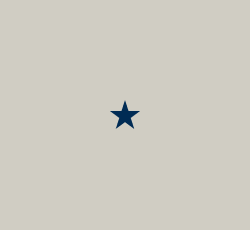United States - Page 6 of 8







Colonoware hollow vessel rim.
Coarse Earthenware | Object #: 1719711
Unlike many of the other ceramics excavated from areas of Mount Vernon, this fragment was made locally of an earthenware called colonoware. Colonoware is an unglazed coarse earthenware fired at a low temperature, which is hand-built from local clays, rather than thrown on a potter’s wheel. The ...
Explore This Item
Colonoware bowl.
Coarse Earthenware | Object #: 1719728
Unlike many of the other ceramics excavated from areas of Mount Vernon, this fragment was made locally of an earthenware called colonoware. Colonoware is an unglazed coarse earthenware fired at a low temperature, which is hand-built from local clays, rather than thrown on a potter’s wheel. The ...
Explore This Item
Colonoware bowl.
Coarse Earthenware | Object #: 1721197
Unlike many of the other ceramics excavated from areas of Mount Vernon, this fragment was made locally of an earthenware called colonoware. Colonoware is an unglazed coarse earthenware fired at a low temperature, which is hand-built from local clays, rather than thrown on a potter’s wheel. The ...
Explore This Item
Colonoware bowl.
Coarse Earthenware | Object #: 1721351
Unlike many of the other ceramics excavated from areas of Mount Vernon, this fragment was made locally of an earthenware called colonoware. Colonoware is an unglazed coarse earthenware fired at a low temperature, which is hand-built from local clays, rather than thrown on a potter’s wheel. The ...
Explore This Item
Colonoware bowl.
Coarse Earthenware | Object #: 1721416
Unlike many of the other ceramics excavated from areas of Mount Vernon, this fragment was made locally of an earthenware called colonoware. Colonoware is an unglazed coarse earthenware fired at a low temperature, which is hand-built from local clays, rather than thrown on a potter’s wheel. The ...
Explore This Item
Colonoware bowl, everted rim.
Coarse Earthenware | Object #: 1721489
Unlike many of the other ceramics excavated from areas of Mount Vernon, this fragment was made locally of an earthenware called colonoware. Colonoware is an unglazed coarse earthenware fired at a low temperature, which is hand-built from local clays, rather than thrown on a potter’s wheel. The ...
Explore This Item

Sandstone whetstone.
Sandstone | Object #: 1830101
Concave sides from excessive use of sharpening many tools. Thin groove along one face for the sharpening of a tool. Iron corrosion surrounding groove. Appears similar to Aquia sandstone quarried locally for Mansion foundation and early outbuildings on the estate.
Explore This Item
Strip of lead shot gang mold sprue.
Lead | Object #: 1830464
This artifact is a strip of lead sprue waste, related to the production of gang molded lead shot. Some shot molds were capable of casting a single ball, and others, called gang molds, were capable of casting several shot all at once. In this latter type, molten lead was poured into the top of t...
Explore This Item
Polished pebble.
Stone, unid | Object #: 1835348
Quarter-size rounded pebble with polished surface. Possibly hand polished or worn from river water. Possibly a gizzard stone.
Explore This Item
Polished raccoon baculum with incised line.
Bone | Object #: 1841966
Missing tip close to thinner end of baculum. Incised line toward thicker end, uneven, and does not totally circle shaft. Iron corrosion on one side.
Explore This Item
Bottle Gourd seed, 3 fragments
Organic | Object #: 1880783
Latin name: Lagenaria siceraria. Bottle Gourds are native to Africa and can be eaten as well as used in a variety of ways including as storage containers. (McKnight, Justine W, 2015. "A Study of Macro-botanical Remains Recovered from the House for Families at George Washington?s Mount Ve...
Explore This Item
Black Locust Charcoal fragments.
Organic | Object #: 1880848
Black Locust wood. Latin name: Robinia pseudoacacia. Black locust wood is very strong and durable in the soil which made it a favorite for fences. It was also used in folk remedies. (McKinght, Justine W. 2015. "A Study of Macro-botanical Remains Recovered from the House for Families at Ge...
Explore This Item
Hickory charcoal fragments.
Organic | Object #: 1880900
Hickory wood. Latin name: Carya sp. A variety of Hickory species are native to the Atlantic region. Hickory wood is very strong and resilient and was used to manufacture tools and containers, in addition to being used to treat fevers and arthritis. (McKnight, Justine W. 2015. "A Study of ...
Explore This Item